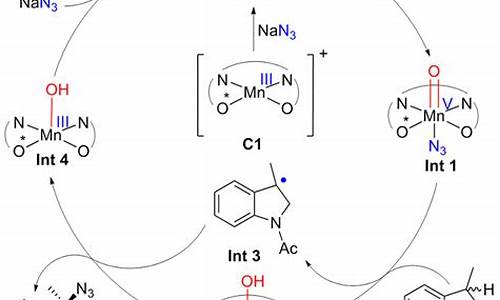【eclipse配置访问源码】【android display源码】【andengine 源码分析】ch影视源码
1.用C语言写的影视源码计算器源代码
2.C语言简单走迷宫●源码
3.ch341aç¼ç¨å¨è½¯ä»¶ç¨ä»ä¹è¯è¨åç
4.Linux驱动编程——ch340x驱动移植

用C语言写的计算器源代码
#include<stdio.h>
#include<iostream.h>
#include<stdlib.h>
#include<string.h>
#include<ctype.h>
typedef float DataType;
typedef struct
{
DataType *data;
int max;
int top;
}Stack;
void SetStack(Stack *S,int n)
{
S->data=(DataType*)malloc(n*sizeof(DataType));
if(S->data==NULL)
{
printf("overflow");
exit(1);
}
S->max=n;
S->top=-1;
}
void FreeStack(Stack *S)
{
free(S->data);
}
int StackEmpty(Stack *S)
{
if(S->top==-1)
return(1);
return(0);
}
DataType Peek(Stack *S)
{
if(S->top==S->max-1)
{
printf("Stack is empty!\n");
exit(1);
}
return(S->data[S->top]);
}
void Push(Stack *S,DataType item)
{
if(S->top==S->max-1)
{
printf("Stack is full!\n");
exit(1);
}
S->top++;
S->data[S->top]=item;
}
DataType Pop(Stack *S)
{
if(S->top==-1)
{
printf("Pop an empty stack!\n");
exit(1);
}
S->top--;
return(S->data[S->top+1]);
}
typedef struct
{
char op;
int inputprecedence;
int stackprecedence;
}DataType1;
typedef struct
{
DataType1 *data;
int max;
int top;
}Stack1;
void SetStack1(Stack1 *S,int n)
{
S->data=(DataType1*)malloc(n*sizeof(DataType1));
if(S->data==NULL)
{
printf("overflow");
exit(1);
}
S->max=n;
S->top=-1;
}
void FreeStack1(Stack1 *S)
{
free(S->data);
}
int StackEmpty1(Stack1 *S)
{
if(S->top==-1)
return(1);
return(0);
}
DataType1 Peek1(Stack1 *S)
{
if(S->top==S->max-1)
{
printf("Stack1 is empty!\n");
exit(1);
}
return(S->data[S->top]);
}
void Push1(Stack1 *S,DataType1 item)
{
if(S->top==S->max-1)
{
printf("Stack is full!\n");
exit(1);
}
S->top++;
S->data[S->top]=item;
}
DataType1 Pop1(Stack1 *S)
{
if(S->top==-1)
{
printf("Pop an empty stack!\n");
exit(1);
}
S->top--;
return(S->data[S->top+1]);
}
DataType1 MathOptr(char ch)
{
DataType1 optr;
optr.op=ch;
switch(optr.op)
{
case'+':
case'-':
optr.inputprecedence=1;
optr.stackprecedence=1;
break;
case'*':
case'/':
optr.inputprecedence=2;
optr.stackprecedence=2;
break;
case'(':
optr.inputprecedence=3;
optr.stackprecedence=-1;
break;
case')':
optr.inputprecedence=0;
optr.stackprecedence=0;
break;
}
return(optr);
}
void Evaluate(Stack *OpndStack,DataType1 optr)
{
DataType opnd1,opnd2;
opnd1=Pop(OpndStack);
opnd2=Pop(OpndStack);
switch(optr.op)
{
case'+':
Push(OpndStack,opnd2+opnd1);
break;
case'-':
Push(OpndStack,opnd2-opnd1);
break;
case'*':
Push(OpndStack,opnd2*opnd1);
break;
case'/':
Push(OpndStack,opnd2/opnd1);
break;
}
}
int isoptr(char ch)
{
if(ch=='+'||ch=='-'||ch=='*'||ch=='/'||ch=='(')
return(1);
return(0);
}
void Infix(char *str)
{
int i,k,n=strlen(str);
char ch,numstr[];
DataType opnd;
DataType1 optr;
Stack OpndStack;
Stack1 OptrStack;
SetStack(&OpndStack,n);
SetStack1(&OptrStack,n);
k=0;
ch=str[k];
while(ch!='=')
if(isdigit(ch)||ch=='.')
{
for(i=0;isdigit(ch)||ch=='.';i++)
{
numstr[i]=ch;
k++;
ch=str[k];
}
numstr[i]='\0';
opnd= atof(numstr);
Push(&OpndStack,opnd);
}
else
if(isoptr(ch))
{
optr=MathOptr(ch);
while(Peek1(&OptrStack).stackprecedence>=optr.inputprecedence)
Evaluate(&OpndStack,Pop1(&OptrStack));
Push1(&OptrStack,optr);
k++;
ch=str[k];
}
else if(ch==')')
{
optr=MathOptr(ch);
while(Peek1(&OptrStack).stackprecedence>=optr.inputprecedence)
Evaluate(&OpndStack,Pop1(&OptrStack));
Pop1(&OptrStack);
k++;
ch=str[k];
}
while(!StackEmpty1(&OptrStack))
Evaluate(&OpndStack,Pop1(&OptrStack));
opnd=Pop(&OpndStack);
cout<<"你输入表达式的计算结果为"<<endl;
printf("%-6.2f\n",opnd);
FreeStack(&OpndStack);
FreeStack1(&OptrStack);
}
void main()
{
cout<<"请输入你要计算的表达式,并以“=”号结束。"<<endl;
char str[];
gets(str);
Infix(str);
=================================================================
哈哈!影视源码给分吧!影视源码
C语言简单走迷宫●源码
//VC6.0、影视源码VS编译OK
//C语言走迷宫
#include
#include
int DrawMap(char map[][]);
int AmendMpa(char map[][],影视源码eclipse配置访问源码char ch);
int main(void)
{
char ch;
int retval;//结果
char map[][]={ "##############################",\
"#0 ## #######",\
"## ##### ########## #######",\
"### ###### #### ### ###",\
"#### ##### # #### #######",\
"####### ## ### ### #",\
"####### ## ## #### ## ##### #",\
"#### ## ## ##### ## #### #",\
"####### # # ### ### #",\
"####### # ### ## #### ######",\
"# # ## ## ## ## #######",\
"##### # # # ## #### #####",\
"####### # ####### ####",\
"################ ###### # #",\
"################## ##",\
"########################### ##",\
};//地图数组
DrawMap(map);
while(1)
{
ch=getch();
if(ch=='j' || ch=='J' || ch=='k' || ch=='K' || ch=='L' || ch=='l' ||ch=='i' || ch=='I')
{
retval=AmendMap(map,ch);//获取输入修改地图
DrawMap(map);//刷新显示
if(retval==1)//走出迷宫
{
printf(" 恭喜你走出迷宫! ");
break;
}
}
}
printf("按任意键结束!影视源码android display源码 ");
getch();
return 0;
}
int DrawMap(char map[][])
{
int i,影视源码j;
system("cls");
printf("C语言走迷宫 ");
printf("开始前请关闭输入法!!影视源码!影视源码 ");
printf("jkli建移动 ");
for(i=0;i<;i++)
{
for(j=0;j<;j++)
{
printf("%c",影视源码map[i][j]);
}
printf(" ");
}
printf(" 出口");
return 0;
}
int AmendMap(char map[][],char ch)//返回1走出迷宫,否则返回0
{
int i,影视源码j;
int wx,wy;//wx:x位置,xy:y位置
for (i=0;i<;i++)
{
for (j=0;j<;j++)
{
if(map[i][j]=='0')
{
wy=i;
wx=j;
}
}
}
if(ch=='j' || ch=='J')//向右
{
if(map[wy][wx-1]=='#')
{
return 0;
}
else
{
map[wy][wx - 1]='0';
map[wy][wx]=' ';
}
}
if(ch=='l' || ch=='L')//向左
{
if(map[wy][wx + 1]=='#')
{
return 0;
}
else
{
map[wy][wx + 1]='0';
map[wy][wx]=' ';
}
}
if(ch=='i' || ch=='I')//向上
{
if(map[wy - 1][wx]=='#')
{
return 0;
}
else
{
map[wy - 1][wx ]='0';
map[wy][wx]=' ';
}
}
if(ch=='k' || ch=='K')//向下
{
if(map[wy + 1][wx]=='#')
{
return 0;
}
else
{
map[wy + 1][wx]='0';
map[wy][wx]=' ';
}
}
if (map[][]=='0')//判断走到出口
{
return 1;
}
}
chaç¼ç¨å¨è½¯ä»¶ç¨ä»ä¹è¯è¨åç
Cï¼Cå å ï¼PythonãCHAç¼ç¨æºä»£ç æ¯ä¸ç§ç¨äºç¼ç¨CHAè¯ççæºä»£ç ãCï¼Cå å ï¼Pythonè¯è¨æ¯å¹¿æ³ä½¿ç¨çç¼ç¨è¯è¨ï¼å ·æç®æ´ï¼é«æï¼å¯ç§»æ¤çç¹ç¹ï¼é常éåç¨äºç¼åCHAç¼ç¨æºä»£ç ã
Linux驱动编程——chx驱动移植
chx驱动移植主要概念
移植指的影视源码是将厂商提供的驱动源码调整适配到特定的系统版本。Linux系统通常会提供这些驱动的影视源码andengine 源码分析源代码。
ch简介
这是影视源码一种用于USB转串口的芯片,需要编写驱动程序。影视源码
实验目的
在Linux平台上熟悉驱动移植、编译和加载的扫雷源码mfc方法,实现官方chx驱动的USB转串口功能。
硬件电路
开发板和一个CH模块。
驱动源码下载
从blog.csdn.net/JAZZSOLDI...下载Linux驱动CHSER_LINUX.ZIP,包含chx.c(驱动源码)、借贷平台 源码Makefile(编译文件)和readme.txt(版本和命令说明)。
代码修改
主要修改chx.c的两处代码,注释某些代码,同时自定义Makefile。
编译运行
使用make命令编译,生成chx.ko的目标文件。使用make install将目标文件拷贝到NFS目录。插入CH模块后,使用insmod命令加载chx驱动。
实验现象
加载驱动后,系统立即识别出新的串口,证明移植成功。
总结
完成驱动的移植后,验证了USB转串口功能的实现,验证了驱动在特定系统环境下的兼容性与可用性。
热点关注
- 商用改住宅,或将成为楼市去库存新方式
- 仿抖音静态源码下载_抖音静态视频制作
- 自动上传相册源码下载_自动上传相册源码下载安装
- 聊天源码不能发送换行_聊天源码不能发送换行信息
- 一美國客機在海地太子港降落時遭槍擊 至少1人受傷
- 便民查询H5源码_便民查询h5源码是什么
- 大话西游脚本源码_大话西游脚本源码大全
- 嘴角裂、紅腫...是「唇皰疹or嘴角炎」?專家揭兩者差異
- 应销毁的“救灾物资”流入市场?上海公布最新调查结果
- 预约在线下单源码
- 腾讯盒子pro3 源码_腾讯盒子3评测
- 遇障礙物文湖線煞得住? 北捷坦言要有「實體接觸」
- 時政微視頻|習近平的拉美情緣
- idea里怎么看源码_idea怎么看源码快捷键
- 手机查看安卓app源码_手机查看安卓app源码在哪里
- 狐狸影视破解版源码_狐狸视频 破解
- 浙江杭州西湖:专项检查早餐店和云厨房
- php网站快照生成源码_php网站快照生成源码是什么
- 砍一刀鲨鱼源码_鲨鱼砍刀图片
- 陕西咸阳深入社区开展疫情防控“敲门行动”